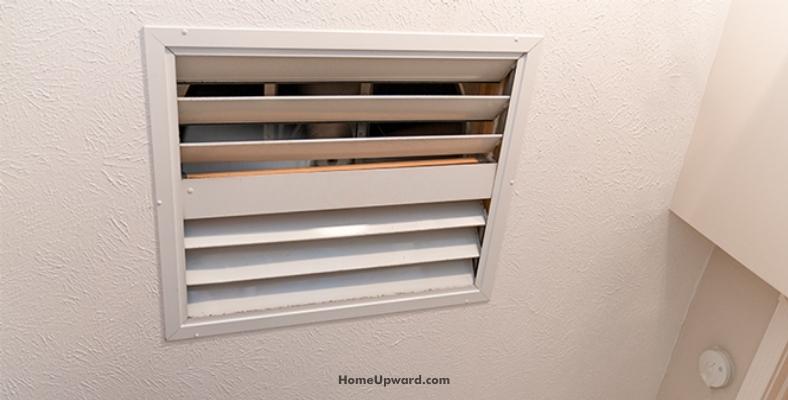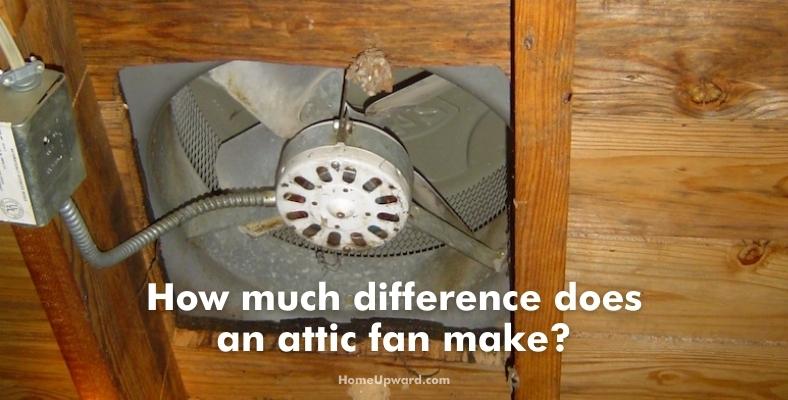Contents
Whole House Fans Vs. Attic Fans: What’s the Difference?
Yes sir indeed, there are some interesting (and important!) differences between whole-house fans and attic fans. The main benefit of a whole house fan is that they use less energy than air conditioning – especially when circulating cooler outside air when the temperature drops.
Of course they have both pros and cons to know.
Some of the characteristics of a whole-house fan are:
- Mounts between the living space and the attic
- Can be run during the evening, morning, and night
- Takes the stale indoor air into the attic and pushes hot attic air out via the roof vents
- Brings fresh cool air into your living space and the heat buildup out of the entire building structure
Attic fans only operate during the day’s heat to decrease attic heat buildup and ventilate air in the attic area. Some characteristics of attic fans are:
- Mount between the attic space and the outside
- Usually only need to run during the hottest time of the day
- They help get out the hottest air in your attic
- It increases negative pressure in the attic and takes outside air via the roof venting
- Eliminate the heat buildup in the attic which helps to lower the temperature in the top portion of your home. This means they decrease the heat flowing into your living space from the attic and help prevent heat from transfer to your living areas, too.
What are the negatives of a whole house fan?
There are some cons to having a whole house fan:
- Whole-house fans are large enough to produce a breeze throughout the house and increase adverse effects that include heat loss, noise, and house depressurization.
- Another con is you need to open your windows. Yeah, it’s such a simple thing to do but even so, people forget to do this step while the fan is running which increases backdraft. Without an open window to provide airflow and fresh, cooler outside air, they can’t properly cool your home or circulate air as they’re intended to do.
- They can be very loud. Without a good installation they can make the house vibrate and be noisy. That’s especially true the older they are.
- The last issue with whole-house fans is they are the only best fit for climates that are cool at night. You won’t save energy if you use this fan in an environment that tends to run hotter and more humid during the day.
What is better: an attic fan or a whole house fan?
The truth is that it depends on your situation and your needs – in some cases an attic fan is a better choice while in ohters a whole house fan is ideal.
- If your attic is insulated an attic fan can help cool your living area when you have hot temperatures in the attic. When using an attic fan, it might not be much different from an insulated loft.
- There’s more use for an attic fan when the attic isn’t insulated. It helps decrease the heat in the house by reducing the temperature in the attic.
- A whole house fan can increase cooling and venting ability if the outdoor temperature is lower than the inside temperature.
- When looking at installation, attic fans are the easier and less costly option. The installation doesn’t take long if there’s an existing power source in the attic.
- A whole house fan is more challenging to install due to cutting the drywall ceiling and the joists involved in the infrastructure, meaning it’s more of an investment if you’ve got the budget.
- Attic fans are better looking to the eye than whole house fans in many cases.
- Hate noise or just want to keep sound to a minumum? The best for sound is the attic fan. One reason for this is the increased insulation attic fans have which acts as soundproofing.
- Attic fans are more accessible when it comes to maintenance or repair.
Overall, attic fans are cheaper, not just with installation but as a product alone. Attic fans and whole-house fans have different purposes so choosing between the two depends on what you need in your home.
Long story short, here’s a simple comparison:
- If you can’t or don’t want to spend a lot, an attic fan may be your best choice. They can’t cool your home or provide airflow like a whole-house fan can, however.
- Whole-house fans require more of an investment and are best for areas where outside air isn’t hot or humid, but provide more comfort because of how they can move air through your entire home unlike an attic fan.
How long does it take a whole house fan to cool the attic?
A whole house fan takes about four to five hours to cool the attic down fully. Naturally, that varies from home to home depending on the temperature and attic size.
How do you use a whole house fan in summer?
You can use it as a pre-cooling option before running your air conditioning to save energy. All you have to do is to open the windows and doors in your house to bring in the cool summer breeze, pushing the hot air out.
This means the air conditioner won’t want to do as much work and will use less electricity overall.
How much difference does an attic fan make?
An attic fan can make a massive difference in temperature, decreasing it by 20 degrees Fahrenheit.
Does an attic fan reduce humidity?
Yes indeed, attic fans can help with humidity. They do so by circulating the air throughout the attic and keeping the moist and hot air out. Unlike a regular vented attic alone, moisture is not only allowed to escape but faster than it would without a fan.
(Note: you’ll still need vents in your attic because moisture must have a path to escape to the outside.)
Do whole house fans use a lot of electricity?
Whole house fans don’t use a lot of energy so there’s less use of electricity. For example, your average whole house fan uses somewhere around 200 to 700 watts while a central air conditioner may use 2,000-5,000 watts. You can cut your monthly power bill in half in some cases, if not more!
Air conditioners of all types (including window air conditioner units, which average about 500 watts and up power consumption) require running an electric compressor to circulate refrigerant in addition to a fan. A fan therefore avoids the need to use a power-hungry compressor, saving a ton of energy in the process.






